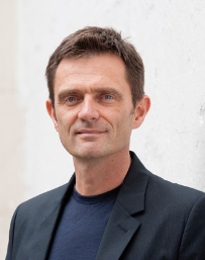
What does Greenspace do for its clients?
We create brand-driving ideas to help our clients reach the next destination on their brand’s journey. What is the ultimate destination? When brands create a legacy for themselves, by attracting lifelong fans and advocates who attract the next generation. So for us, what matters most is creating brand driving ideas that generate positive and lasting value.
Does Greenspace offer public relations or communication services to its clients? If so, what campaign have you been working on recently?
We would not claim to be a classic PR company, but we certainly offer a wide range of communication services from film, digital and print communication, to live experiences and built environments. Recently we have created a live immersive experience for Bershka at Sónar Festival 2014, a pavilion for Škoda at the Goodwood Festival of Speed, and a new brand identity and website for Zaha Hadid Architects.
Has telling a brand’s story changed now traditional PR methods have given way to social and digital?
With such an explosion of media choice, and the immediacy of delivery it’s never been more vital to have a clear, single-minded story at the heart of every brand idea. The acid test for the brand driving idea is whether it can spark interest in 140 characters or less. Afterwards, all kinds of new and traditional media formats can have a role.
You were previously executive creative director at Imagination and Saatchi & Saatchi. How did working for such big agencies prepare you to set up on your own?
For me, the experience of working for both these renowned agencies meant I worked with major clients on innovative, stretching projects, on every continent. As a consequence, I learned to think and dream with real ambition, and without fear. These are good qualities to have, and to pass on to others, should you decide to create your own enterprise.
How can brand communications help in a reputation crisis?
I created a pan-European campaign for Toyota in response to its global recall crisis in 2010 called ‘Your Toyota is My Toyota’. It was created to reinforce Toyota’s reputation for building safe, reliable and quality cars. We visited Toyota manufacturing plants, RND facilities and design studios, filming documentaries with real car workers, designers, retailers, and engineers to gather first-hand testimonies. The campaign had a profoundly positive effect in reassuring existing customers and in attracting new customers, to believe in Toyota’s reputation.
How do you ensure your campaigns are sustainable?
We think the core concept of sustainable development – meeting the needs of the present without compromising the ability of the future – is equally relevant to how we think about all forms of branding and marketing activity. When we develop brand driving ideas, we think about how the initial investment in a campaign can ensure a return on investment, and create an enduring legacy.
How would you go about a rebranding project for a certain client?
We follow a strategic process that clearly identifies and prioritises the client’s business goals, explores relevant issues and gathers essential human insights. We use this analysis, in consultation with our clients, to agree the effective challenge for the brand. Then we take the first creative step to define the brand driving idea. This often takes the form of a short, descriptive sentence that can be easily understood, adopted and shared. We then create a short story, which we often animate, in order to bring emotion and personality to the concept. Once this has been established it becomes the start point for all brand activities, ensuring we create a connected universe for all our actions
How do you ensure you create tangible results for the client? What methods and measurements do you use?
The first step is for the client to sign off of the creative brief and strategy. We have created a five-step process that we go through with every client, so that this is possible. The KPIs and the analytics vary depending on project type and client as our services and range of work are so diverse.
When is it appropriate to say no to a client?
I think it’s always better to say no, when saying yes would lead to a waste of time, resource or opportunity.
The Greenspace team can be found tweeting @thegreenspace.